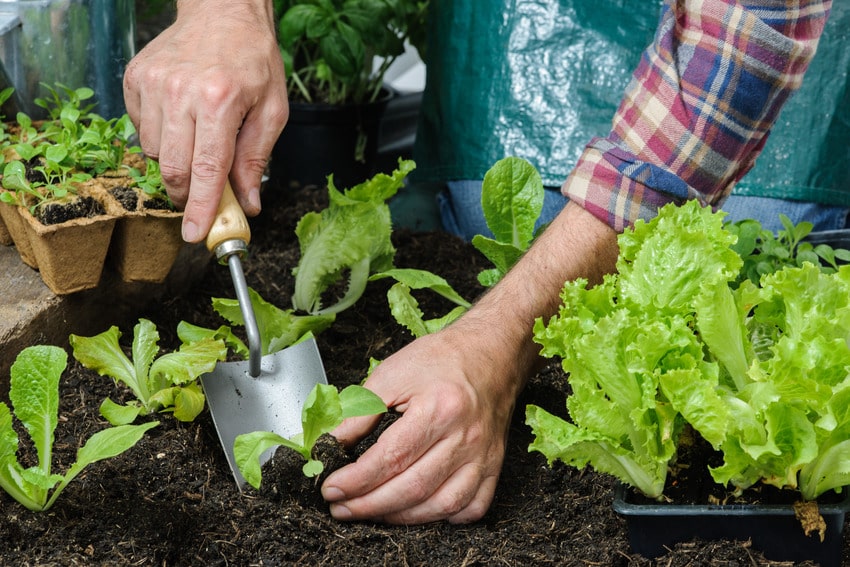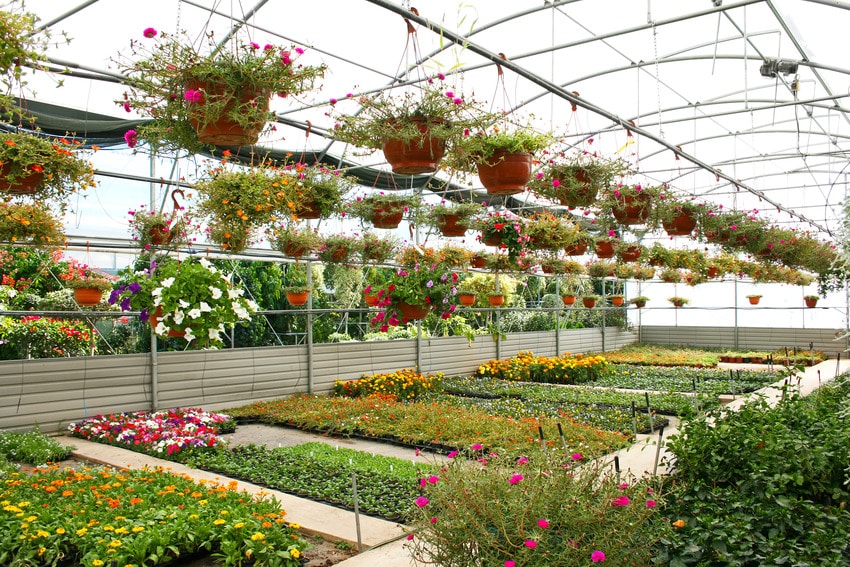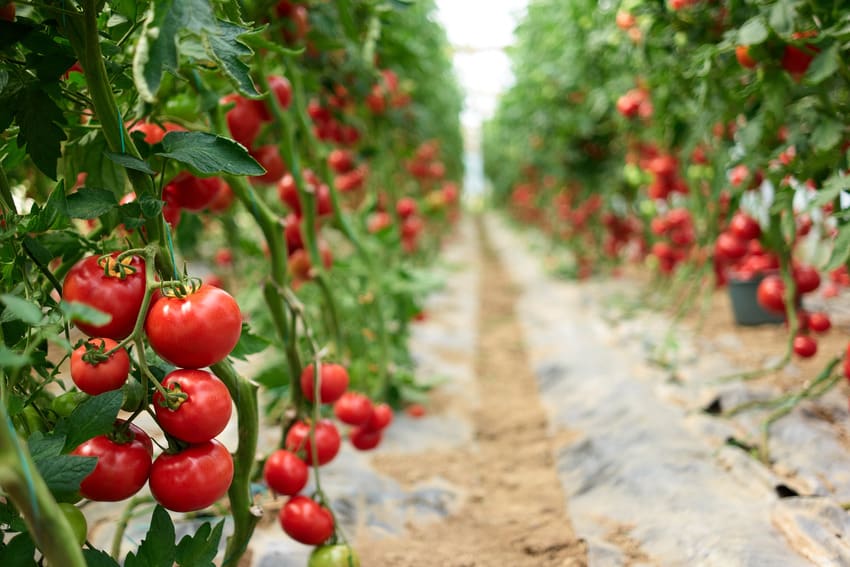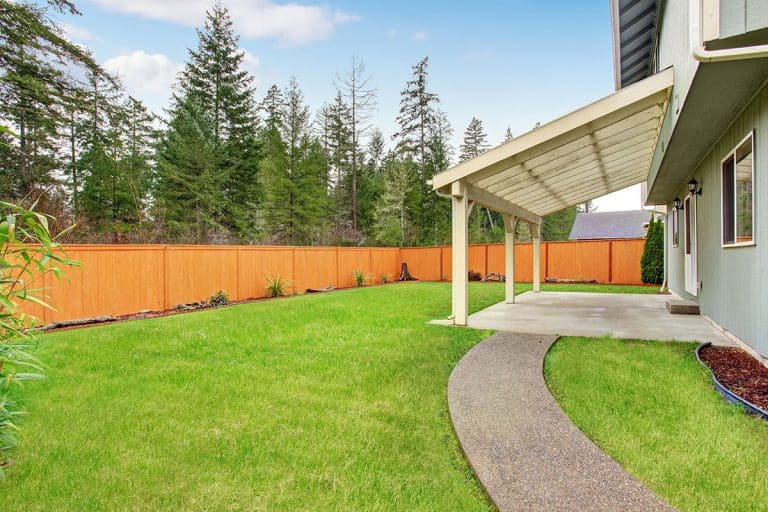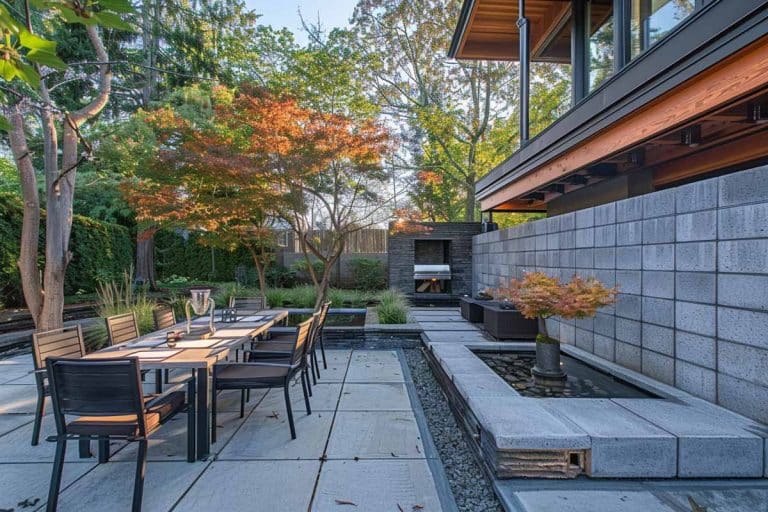Greenhouse Plants (Growing Guide)
Greenhouse plants growing guide for flowers, fruits, vegetables, herbs, and more. See also the best greenhouse planting season.
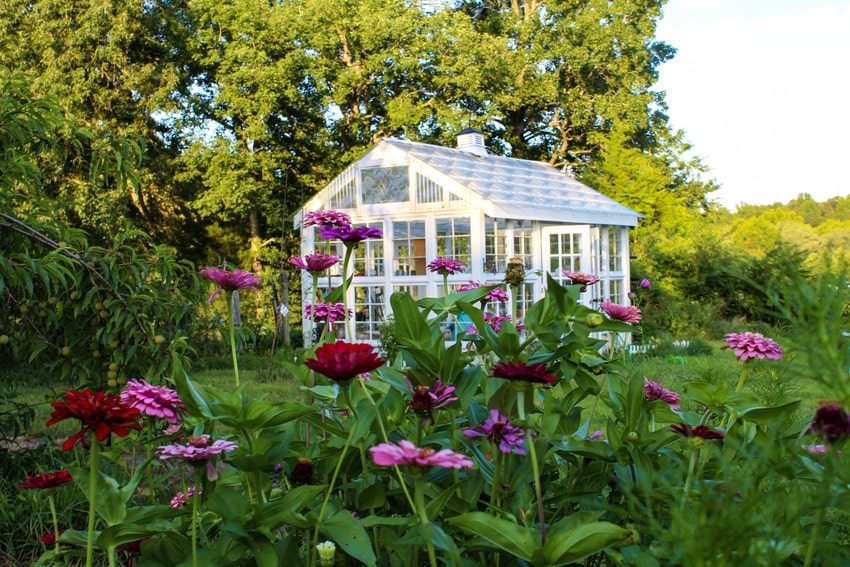
Greenhouses are perhaps the most effective way to grow healthy, vibrant plants. Not only can they be controlled to match literally any type of environment, but they can also be used to start annuals, overwinter perennials, and even maintain a beautiful subtropical paradise.
You can grow a Meyer lemon tree in freezing outside temperatures, or bloom countless tropical orchids in a region with little sunlight.
Greenhouses use very simple yet useful technology. Essentially, a greenhouse is made of glass, acrylic, or polycarbonate plastic, which then converts energy from light or sunlight into heat energy.
Heat energy serves as a replacement for very bright, direct light, though some light is still necessary. Fun fact: greenhouses are one of humanity’s first baby steps into thermodynamics! [toc]
Plants To Grow In A Greenhouse
Now that you have an idea about the function of a greenhouse, let’s get started on the growing guide to greenhouse plants starting with the most important part: what you can grow using one.
To be clear, the options are limitless. However, if you don’t have a state-of-the-art glasshouse with environmental controls, there are a few limitations.
If you prefer to grow species that would never thrive outside your region (or even inside), then temperature controls are strongly recommended.
Here are the best plants to grow in a greenhouse:
Citrus
Lemons, limes, oranges, and grapefruit are all commonly grown in greenhouses, all of which you can grow in your own backyard greenhouse.
Citrus, in particular, is very susceptible to disease, which can be prevented by providing a barrier between them and the outside environment through the greenhouse walls.
Go for almost any citrus species you like, so long as you can maintain enough heat during winter months to keep them from freezing.
Vegetables
All of the veggies you could ever dream of, straight from the greenhouse garden. Lettuce and tomatoes are the most common veggies that you can grow in a greenhouse.
Moreover, other vegetables like peas, beans, onions, squash, and even cucumbers can also be grown in the area.
Fruit
Speaking of growing food, several varieties of fruits can be grown inside a greenhouse, given ample space.
For instance, bananas can be grown in a heated greenhouse, while vining melons will come on weeks sooner when grown inside. Meanwhile, other fruit trees like apricots, pears, and peaches happily thrive in tall greenhouses. Read more about indoor trees here.
Flowers
Did someone say fuchsias? These plants happily thrive in a greenhouse, especially in hanging baskets with airflow.
Similarly, annuals like petunias, marigolds, dipladenia, and geraniums can grow twice as large and vibrant compared to those grown outside. More importantly, the greenhouse protects the delicate blooms from the threats of rain.
Tropicals
Do you wish you had all the tropical plants in the lush photos you see online? You can.
Species that need a bit more than the standard outdoor setting can thrive better in greenhouses, including ferns, orchids, crotons, begonias, and even hibiscus.
If you really want to branch out further, try something fun like bromeliads or other epiphytes!
Herbs
Get ready to finally plant your very own tea garden, because herbs actually grow like weeds in a greenhouse!
Almost any herb will do: lavender, rosemary, mint, tea plants, basil, sage, oregano—you name it, it will blissfully grow in a greenhouse. You could even grow some less common herbs like lemongrass or catnip.
Greenhouse Planting Schedule
In case you’re wondering about the growing guide to greenhouse plants: yes, there are specific times of the year when you should start planting in a greenhouse. These times will vary depending on the region you live in, so we’ll cover that a bit as well.
Of course, the planting times for plants in a greenhouse will differ from those outside, especially since you’ll be giving your plants a good head start on life.
For cold climates, you’ll want to plant seeds about a month before the last danger of frost has gone, so long as the internal climate of the greenhouse isn’t below freezing.
Which is to say that although colder climates may require later planting, as long as your greenhouse is either well-insulated or heated, you can start growing a month ahead of schedule.
As a result, this will allow your seedlings to get a head start on their growing season outside.
Temperate climates are a bit more forgiving: if you want half-grown plants before the real growing season begins, by all means, go for it!
You can go ahead and start planting your seeds at least two to three months before the real growing season begins, given that there is enough light infiltrating the greenhouse to provide ample support for rapidly growing plant babies.
Just make sure that you repot them before they get too big. Otherwise, your seedlings will be more difficult to plant in the garden.
Unlike the previous two climates, hot and arid climates have opposite growing seasons. The best time to grow garden foods is not in the spring, but in the fall and in late winter.
This is because the summer months are generally extremely hot for plants to survive. For plants that take a great deal of time to mature, plant either in early fall or early spring to ensure that you can enjoy the fruits of your labor before the summer season hits again.
For other plants, like greens, you can grow them any season so long as they receive plenty of water.
Can A Greenhouse Grow Plants Year Round?
Sure, if you know what to grow and how to grow it. Some leafy greens, such as spinach, lettuce, and cabbage can grow just about any season in a greenhouse.
Similarly, you can bet on root vegetables, including onions, carrots, potatoes, and turnips, to be there for you all year, every year. Save seeds to regrow your crops, and you’ve got yourself self-sustaining, fresh food anytime!
Just remember that sunlight affects the flavor of the crops. If there’s no sun and heat, there are no natural sugars, which might then influence the taste of supposedly fresh garden foods.
What Can You Grow In An Unheated Greenhouse Over Winter?
Winter greenhouse plants don’t have to be pretty to be healthy—you can still pretty much grow your favorite plants like tomatoes, cucumbers, and herbs all year round—but they may not be as lustrous as when the spring season encourages them to be.
Nonetheless, winter cabbage, turnips, and other low-lying or compact vegetables can survive extreme weather conditions as long as they are protected inside a greenhouse with sufficient insulation and heating.
Growing plants in an unheated greenhouse during the winter months, on the other hand, can be quite tricky but there are available options for you as well.
You can certainly overwinter some annuals in your greenhouse, but make sure that they have enough protection from frost, which will kill almost anything it touches.
One of the best plants to grow in a greenhouse with no heat in the dead of the coldest months is mint. Mint requires little heat or sunlight to grow and is useful year-round.
Consider related species as well, including lemon balm and catnip, which both make excellent herbal teas to help combat nasty wintertime blues.
Summer Greenhouse Plants
Summer in the greenhouse can get pretty toasty—and your plants tend to notice this, too! As a general rule in our growing guide to greenhouse plants, it’s so important to have some sort of ventilation, fan, or other forms of air circulation in a greenhouse.
By keeping the air in motion, the plants can take advantage of the heat, rather than be damaged by it.
Some of the most beautiful and fun plants can be grown in greenhouses in the summer, no matter where you live. Here are a few flowers that you are bound to get your hands on:
- Geraniums
- Petunias
- Begonias
- Fuchsias
- Heliotrope
- Irises
- Calendulas
- African violets
- Orchids
- Sunflowers
And the list goes on. That’s not to mention all the species that are specifically bred for your region, as well. Check online or at a local nursery to see which plants are kept in greenhouses for sale!
Can You Grow Fruit In A Greenhouse?
Absolutely. Anything you want, given that you have the height for trees, the proper climate inside the greenhouse, and a good irrigation system (even if you just make sure to water the plants every day).
In fact, you can grow anything from a watermelon to a pear to a goji berry in a greenhouse. The trick is to let as much light and heat in as possible without burning the leaves of sensitive fruit-bearing plants.
Since most fruit grows on trees, some of which are inherently tall, chances are it will grow to reach near the top of your greenhouse where it can take full advantage of available direct sunlight.
Meanwhile, shade cloth is a product readily available at almost every large retailer and goes a very long way to ensure that fruit trees don’t burn.
You can use it during the hottest part of the day to cover your greenhouse if the leaves begin to burn or show signs of dropping off at random.
What Can A Beginner Grow Inside A Greenhouse?
Another thing to take note of in our growing guide to greenhouse plants:
For beginners, stick with what you know. This might consist of the most common plants at the garden store, a few of your trusty indoor plants, or a few trays of seedlings.
A great way to determine the range of plants you can grow is to choose plants on opposite ends of the needs spectrum.
For instance, mint requires cooler, shadier environments, whereas sage will grow in bare, dry dirt on the side of the road and somewhere warm.
You could also try starting with a wide variety of plants from a store, just to see how they react in their new environment before going all in.
Why Do Plants Grow Better In A Greenhouse?
Protection from outside extremes is really most of it, but more than that, there are certain comforts a greenhouse can provide to plants that help them grow bigger and faster.
Here are a few key factors that make plants happily thrive in a greenhouse setting:
- Energy conversion, as mentioned briefly earlier, is one of the most important sciences of greenhouse growing.
Converting light energy into heat energy evenly distributes energy to all plants in the greenhouse, rather than forcing plants to compete for as much sunlight as they can grab.
- Protection from frost goes a long way in the life of a plant, especially when they are particularly sensitive.
Some plants that are perennials in your region normally can be treated as annuals if they live in a greenhouse; not because they live longer in there, but because they don’t die off or become dormant for too long to grow back as a result of frost and cold snaps.
- Humidity is another ingredient in the greenhouse pie. In fact, it’s so easy to maintain humidity in a greenhouse that some invasive microbes could slip in, which makes it especially important to check for them regularly in soil and around pots on the ground.
However, this same humidity can provide more regular and evenly distributed water to plants, which gives them a huge advantage over the outside plants, who must gather all their water through their root systems.
Despite the stigma that greenhouses are a hassle and not worth time and effort, there is so much to gain from growing in a greenhouse that the maintenance and cost are almost obsolete.
However, for best results, upkeep is very important. You’d be surprised at how easy it is for plants to push you out of their space once they get comfortable.
Basic upkeep includes cleaning inside and outside greenhouse walls, using organic pesticides to keep out unwanted intruders, and weeding.
Once uninvited guests make their way into the greenhouse, whether that be insects or invasive plants, it can be very difficult to boot them out. Staying on top of these issues is very important to keep your greenhouse thriving.
Enjoyed this article on the growing guide to greenhouse plants? Visit this page on the 55 best vertical garden ideas for more related content.


